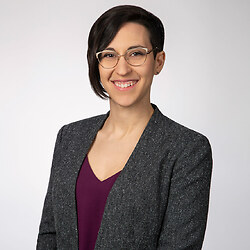FAA’s Model Aircraft Registration Rule Doesn’t Fly with the D.C. Circuit
On May 19, 2017, the United States Court of Appeals for the D.C. Circuit announced its decision in Taylor v. Huerta, vacating the FAA’s 2015 Registration Rule as applied to model aircraft. That rule requires owners of small unmanned aircraft, including model aircraft, to register with the FAA. The court held that the plain language of Section 336 of FAA Modernization and Reform Act of 2012 (FMRA) bars the FAA from promulgating any rule or regulation regarding model aircraft, and that this prohibits the agency from applying the Registration Rule to model aircraft owners. In doing so, it rejected the FAA’s argument that the agency could adopt rules that included model aircraft owners so long as they did not target model aircraft owners specifically.
On its face, the court’s decision appears to be a rejection of all FAA authority to regulate model aircraft. But while the court relied on a straightforward interpretation of the statutory definition of “model aircraft,” it did not consider that there are occasions where the FAA may in fact promulgate model aircraft regulations. The exemption in Section 336 applies only where:
- the aircraft is flown strictly for hobby or recreational use;
- the aircraft is operated in accordance with a community-based set of safety guidelines and within the programming of a nationwide community-based organization;
- the aircraft is limited to not more than 55 pounds unless otherwise certified through a design, construction, inspection, flight test, and operational safety program administered by a community-based organization;
- the aircraft is operated in a manner that does not interfere with and gives way to any manned aircraft; and
- when flown within 5 miles of an airport, the operator of the aircraft provides the airport operator and the airport air traffic control tower (when an air traffic facility is located at the airport) with prior notice of the operation (model aircraft operators flying from a permanent location within 5 miles of an airport should establish a mutually-agreed upon operating procedure with the airport operator and the airport air traffic control tower (when an air traffic facility is located at the airport)).
FMRA, Pub. L. No. 112-95, § 336(a)(1)-(5) (2012).
Therefore, it would appear that even after Taylor the FAA may still, for example, require hobbyists to register if they don’t intend to operate in accordance with community-based safety guidelines within the programming of a nationwide community-based organization.
However, while the FAA retains some authority over model aircraft, it is modest. The court’s decision underscores a tension in the regulation of unmanned aircraft; in part because of Section 336 of the FMRA, the FAA regulates commercial UAS operators differently than modelers, despite the fact that they frequently operate the same equipment under similar circumstances.
In particular, the opinion will challenge the FAA and Executive Branch agencies’ ability to address security issues related to UAS flights. The court’s conclusion that Section 336 requires modelers be carved out of even generally applicable regulations will make it harder to devise Remote ID and other mechanisms that will apply to all UAS flights. The decision therefore may spur amendments to the FMRA as Members of Congress on both sides of the aisle have expressed concern about the proliferation of hobbyist operations.
Taylor also challenged FAA Advisory Circular 91-57A, which announced that model aircraft would be subject to certain flight restrictions in the Washington, DC area. The court denied Taylor’s petition as untimely, since he filed it after the statutory 60-day challenge period.


